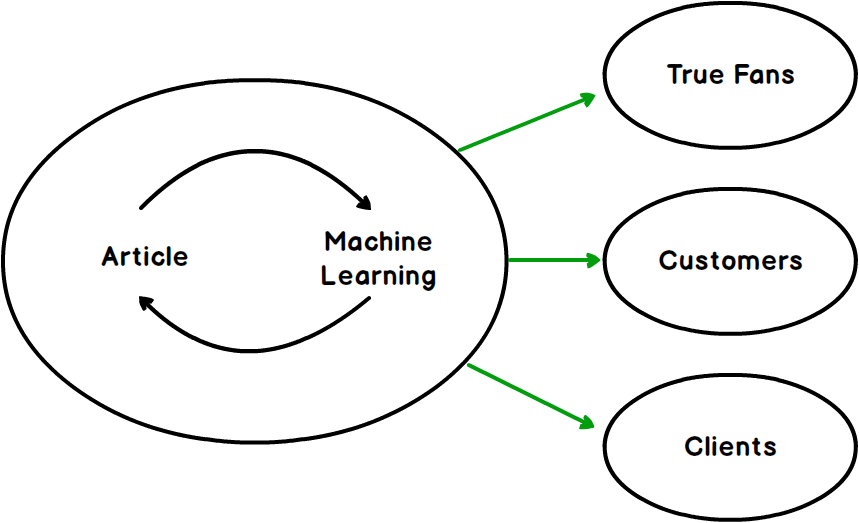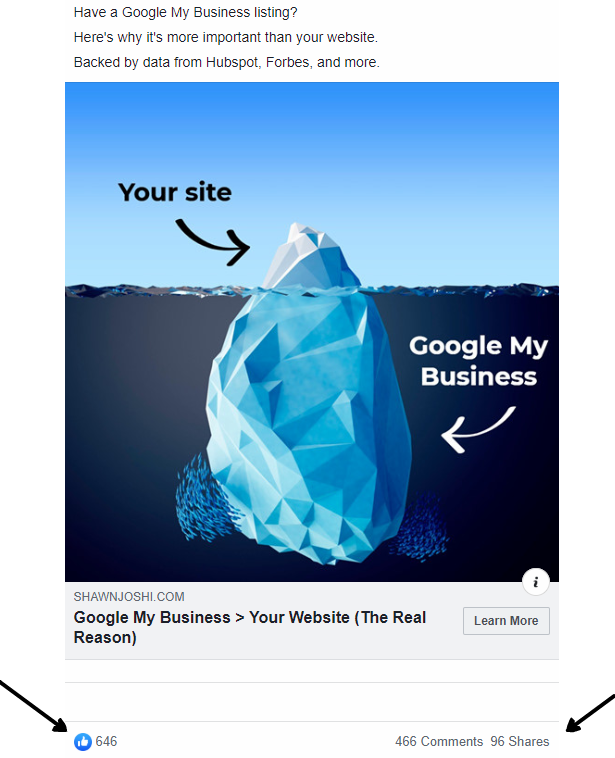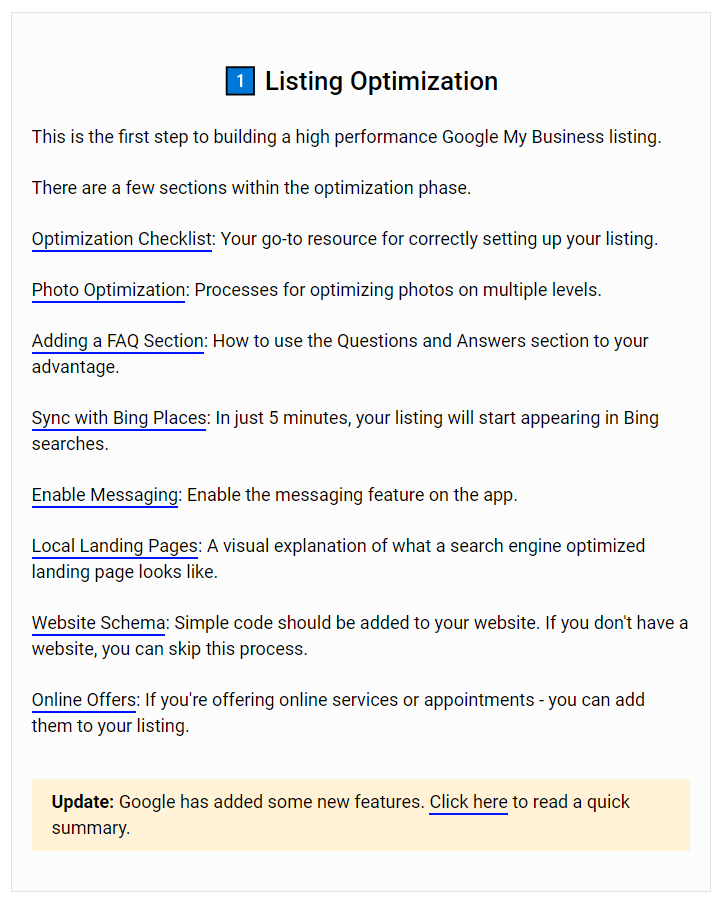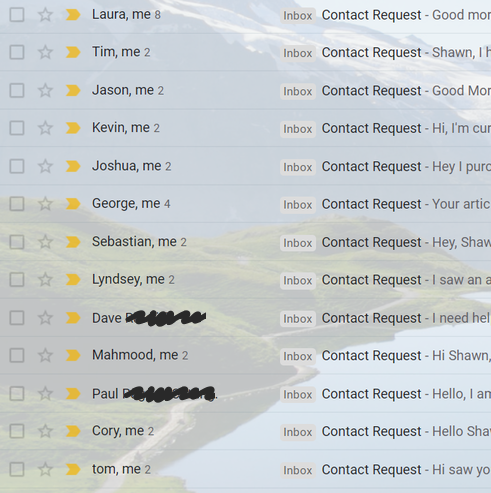Magnetic Storytelling:
How freelancers can attract better clients (and create passive income).
I wrote one article for this site last year.
It produced the following results:
- $327,000 in product revenue.
- More than $130,000 from new client projects (including a wait list).
- An email list of 4,600+ subscribers.
In this article, I'll explain how I did it.
It's based on a framework called Magnetic Storytelling.
If you're a freelancer - this will arm you with knowledge to turn your business into an asset - instead of a hamster wheel that feels a lot like a job.
What is Magnetic Storytelling?
The 10,000 foot view:
Magnetic Storytelling combines articles with machine learning to build your perfect audience.
This results in:
- Being positioned as a trusted advisor (instead of another dime-a-dozen freelancer).
- Building an audience of True Fans, in months instead of years.
- A waitlist of clients excited to work with you (beating the feast-or-famine cycle).
- Creating another source of income - so you're not stuck trading time for money.
It looks like this...

Systems Thinking: An important primer before we start.
Magnetic Storytelling is a system of interconnected parts. If you change one part of the system, it will affect the other parts.
Cue the cliché...
The sum is greater than the parts.
As you read, you're going to be tempted to "optimize" parts of the process.
This is natural. Especially if you have a marketing background.
Try to resist this urge.
You can only optimize the process after you understand the fundamentals. Deeper understanding comes from doing the work, not just reading about it.
Let's get started.
Articles can create reality distortion fields.
Here's how to do it.
Steve Jobs was famous for his reality distortion field. This was his ability to bend other people's view of reality to his own.
(The term was originally used by Bud Tribble, one of the original members of Apple's design team, and current VP of Software Technology.)
Here's what's fascinating...
An article - when positioned correctly - can create its own reality distortion field.
This happens when you focus on shifting or sharpening your reader's perspective.
Some examples of how to do this are:
- Strengthening an existing belief that your audience has.
- Stating an opinion that's contrary to popular belief.
- Saying something that everyone's thinking, but no one is talking about.
- Showing a hidden trend that most people are missing.
In my Google Business article, I focused on showing a trend through research and analysis.
Here are some guidelines for choosing a topic:
- You should write about something you spend a lot of time thinking about. By thinking about it so much, you'll have some interesting insights to share.
- It needs to be related to the industry you work in.
- If you're struggling to choose a topic, ask yourself: "What do I find myself explaining to clients that confuses or surprises them?"
Here's what the article is not:
It's not "me too" content. It's not something that you can find on 10 other blogs.
It's not a personal puff piece. In my article, I waited until the very bottom of the page to introduce myself.
It's not a sales page. You're not selling your products or services. This kills engagement and social sharing.
It doesn't need to be written by a pro. You don't need to be a talented writer, and you definitely don't need to hire an expensive copywriter. (If you are a copywriter though - all the power to you.)
The article is the engine that drives this entire framework.
Now let's talk about the fuel that makes it go...
Leveraging billion-dollar machine learning algorithms.
To explain this, I need to borrow a concept from Kevin Kelly. He's the co-founder of Wired magazine.
In 2008, he wrote about a theory called 1,000 True Fans.
It has influenced some of the brightest business minds, including Tim Ferriss - who references it in his books and podcast.
Here's a summary of 1,000 True Fans (paraphrased):
All you need is 1,000 True Fans to make a living from your work.
True Fans are the most loyal, engaged part of your audience.
They'll consume every piece of content you release.
If you offer services, they'll be the first to sign up.
If you speak at a conference, they'll be there.
Your True Fans will spread the word about your work.
If you have 1,000 True Fans, you'll probably have hundreds or thousands of casual fans. They'll drive a significant portion of revenue in total.
Before the internet, it was difficult to find your True Fans - let alone 1,000 of them.
That's because you were limited by your physical location.
Thanks to the internet, you have access to a global audience. This makes it easier to reach your True Fans, regardless of how "niche" your product or service is.
Side note: If you're a freelancer, you need way less than 1,000 True Fans.
Even with the internet, finding your True Fans had its challenges (there's a lot of rocks to turn over).
But in 2021, it's become virtually frictionless to find them.
Now we can leverage history's most sophisticated advertising algorithms to do the heavy lifting for us.
These algorithms are learning 24/7 - from billions of dollars of advertising - across millions of individual advertisers.
And we get to tap into that power.
For pennies on the dollar.
Here's an example of how it works with Facebook Ads:
- You send traffic directly to your article - without any opt-in required.
- Facebook's algorithms learn which readers engage with your content, and which don't.
- Your traffic quality (and engagement) gets better as Facebook keeps learning.
By doing this, you've created a win-win-win scenario:
A win for Facebook: You're offering their users a great experience - which means they'll keep using Facebook (or Instagram).
A win for the reader: Your content is like pouring pure dopamine over their brain. (Without needing to pull out their wallets or sign up for anything.)
A win for you: Facebook does the hard work of finding your True Fans. Even while you're sleeping.
There's another benefit to this process...
Because you're sending people to value-first content, we're creating the perfect environment for social sharing and referral traffic.
In my case, this resulted in 26,000+ extra visitors (that I didn't pay a single cent for).
Here's one of my ads. Note the engagement and social shares:

This engagement also kickstarts a positive feedback loop:
- Facebook shows the ad to those most likely to read your article.
- Some of those readers leave positive comments (see below for examples).
- Those positive comments add social proof - which convinces even more people to read your article.



At this point, you might be asking...
"...But how am I going to earn revenue from this?"
"Especially if I'm not selling anything in the article?"
After someone reads your article, they'll view you as a trusted advisor.
That's because you've helped them see the world a little differently - in a way that benefits them or their business.
At this point, many of your readers will want more from you (other content, your opinion, etc.)
So you're going to make a relevant offer.
This could be...
- Subscribing to a newsletter.
- Booking a consultation.
- Or linking to your product.
The last option is the most powerful - by a country mile.
It's also the best option for freelancers who aren't comfortable spending money on advertising.
The process of signing a client - from initial contact to signing an agreement - can take weeks or months.
You shouldn't wait that long to make your advertising costs back.
So the goal of the product is to break-even on those costs.
If you do that, you're building an audience for free.
It gets more interesting when you move past break-even and into profit.
That means you've created another source of income - that's mostly passive.
And that means you're not 100% dependent on client work anymore.
For most freelancers, that's a game changer.
"I don't have a product. What do I do?"
Sell your sawdust.
I heard about this idea from Austin Kleon (author of Show Your Work).
Here's how it applies to Magnetic Storytelling:
Most freelancers have a half-made product right under their nose.
It's their process - the work they're doing everyday for their clients.
While your clients hire you to do the work for them - there's a much larger segment of your audience that wants (or needs) to do it themselves.
Some of my best clients have actually bought my product first - then hired me.
(More on this in the next section.)
I used my existing processes for optimizing Google Business listings to create the Execution Plan over a weekend:

As a freelancer - you already have some sort of process for doing your work - even if it's not formally laid out in a document.
That's enough for you to get started.
Even if no one buys it, it still helps refine your process and do the work more effectively
(And if you hire anyone in the future, it makes training painless.)
Getting clients (the easy part).
Until now, we've focused on building a system.
One that positions you as a trusted advisor and builds an engaged audience.
This makes getting clients easy...
Because they'll come to you.
In my case, I had potential clients messaging me via email and Messenger:

Magnetic Storytelling produces two groups of potential clients.
Group #1: They read your article and want to hire you right away.
These are hot prospects for two reasons:
- They're already aligned with your perspective (the one in your article).
- They're inbound prospects (they're pursuing you, instead of the other way around).
Group #2: They bought your product.
This group shares the same traits of the first group - with one major difference:
They already spent money with you. Signaling a much higher level of trust.
You're not just talking to a potential client here. You're talking to an existing customer.
As you probably guessed - most readers won't be ready to pull the trigger on your product or service right away.
Which is why you need to...
Stay in touch with your audience.
This could be with a newsletter, community, etc.
I haven't done any promotions in my newsletter - but opportunities have already come up - just by staying top-of-mind with my audience.
But there's another reason for doing this...
While we're leveraging the powerful algorithms offered by Facebook and Google, there's a risk involved:
You're building your home on someone else's land.
So you need to protect yourself against the downside.
Some real-life examples of why:
- A health website builds its business off the back of Google search traffic. After an algorithm update, their traffic falls off a cliff.
- An e-commerce company gets 90% of its traffic from social ads. Their ad account suddenly gets shut down, and they see revenue drop to zero overnight.
These cases might sound few and far between - but they're not. I've seen them happen countless times.
Think of an email list as insurance.
(Which - if you run into issues like the examples above - can mean the difference between your business surviving or folding.)
Freelancers are a dime-a-dozen. Trusted advisors are rare and valuable.
You can find dozens of freelancers for almost any job these days.
If you're playing on the same field as everyone else, you'll be a commodity.
(No matter how good you are.)
By positioning yourself as a trusted advisor, you're changing the dynamic.
Magnetic Storytelling accomplishes that - and then some.
It's a system that produces:
- A hyper-engaged audience.
- Highly qualified prospects (that are pursuing you).
- The potential for passive income (from a simple product).
I've never met a freelancer who doesn't want more of all three.